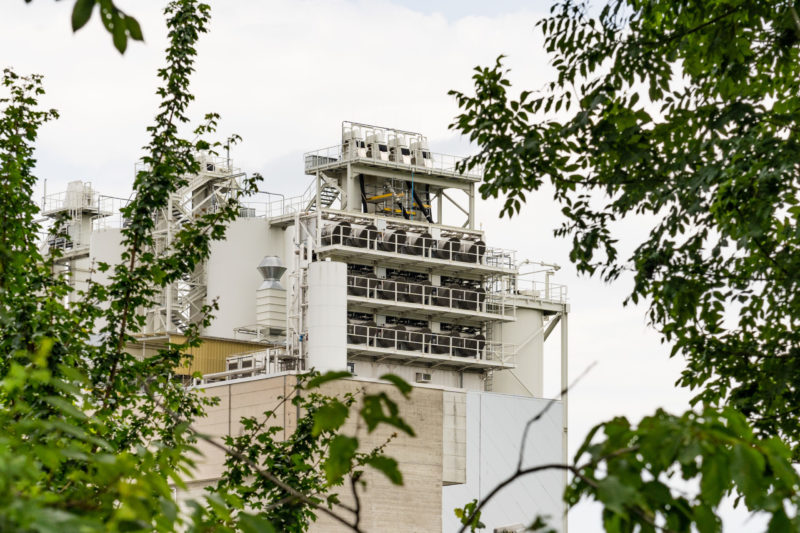
Scholars discuss the possibilities and pitfalls of relying on carbon capture and sequestration.
In a recent United Nations report, scientists from around the globe warn that some severe impacts of climate change are inevitable and irreversible. Even if all nations immediately reduce carbon emissions, global temperatures will still rise, and extreme weather events will increase in frequency.
Nations can avoid even worse outcomes, however, by drastically reducing carbon emissions and removing existing carbon from the atmosphere by 2050, the scientists conclude. The process of removing carbon dioxide from the atmosphere and storing it elsewhere is known as carbon capture and sequestration (CCS).
One version of carbon capture and sequestration consists of growing crops that consume and store carbon dioxide in the soil, such as cereals and legumes. President Joseph R. Biden’s plan for reducing greenhouse gases includes creating financial incentives for farmers to implement this technique. But as the Biden Administration has realized, paying farmers to combat climate change is complicated. The federal government might not be able to pay farmers enough to offset the cost of enabling their farms to capture carbon. The U.S. Department of Agriculture has requested public comments on how it can implement such incentives.
A more complicated method of removing carbon dioxide from the atmosphere—known as CCS technology—physically captures the carbon dioxide that industrial and power plants generate before it can enter the atmosphere. The captured carbon dioxide is then transported and stored deep underground.
Despite CCS technology’s potential to combat climate change, its widespread implementation presents a variety of challenges. The technology used to capture carbon dioxide generated by industrial plants is new and difficult to implement at a scale that would significantly reduce carbon emissions. Currently, CCS technology only captures a fraction of the carbon emitted from power plants—approximately 40 million metric tons per year of carbon globally. The United States emits over 5 billion tons of carbon per year alone.
Furthermore, the technology needed to compress, capture, and transport carbon dioxide is expensive and can decrease the efficiency of industrial plants. Transporting carbon dioxide can also lead to dangerous leaks and explosions. In addition, some critics view CCS technology as a way to prolong dependence on fossil fuels. They instead prefer to encourage policymakers to focus on developing clean sources of energy.
But if nations seek to avoid climate disaster, they might need CCS technology to capture enough carbon dioxide from the atmosphere. This week’s Saturday Seminar focuses on the current barriers to scaling CCS and potential steps toward comprehensive regulation.
- In a policy brief issued by the International Risk Governance Council (IRGC), Elizabeth J. Wilson and Melisa F. Pollak of the Humphrey School of Public Affairs at the University of Minnesota argue that key uncertainties prevent the evolution of a comprehensive CCS regulatory framework. To expand the regulation of commercial-scale CCS, Wilson and Pollak recommend that regulators study early CCS pilot projects, develop governance rules for geological storage, and make decisions about long-term liability of storage sites. They also suggest that proponents of CCS technology work to earn public trust as they seek to promote the commercialization of the technology. If successful, CCS technology will not only deliver climate benefits but will also promote energy security and economic competitiveness.
- In an article published in the Texas Journal of Oil, Gas, and Energy Law, attorneys Austin Lee, James McAnelly, Elizabeth McGinley, and Jarrod Gamble note that recent amendments to Section 45Q of the Internal Revenue Code provide economic incentives for industrial manufacturers to invest in CCS technology. Lee and his coauthors also highlight the distinct legal implications resulting from the enhanced oil recovery and sequestration projects that Section 45Q tax credits make more likely. They contend that new CCS technologies present a unique economic opportunity that could spawn a carbon capture revolution.
- One potential method of CCS involves injecting carbon dioxide into geological formations underneath the ocean floor. In an article published in the UCLA Journal of Environmental Law and Policy, Romany Webb and Michael B. Gerrard of Columbia Law School explore how current laws might impact these offshore efforts. Webb and Gerrard explain that, although no regulatory regime explicitly governs CCS in federal waters, seabed injections are likely covered by the Marine Protection, Research, and Sanctuaries Act of 1972. This statute governs the dumping of waste and other materials in the ocean. Webb and Gerrard argue that the Act presents a substantial barrier to offshore CCS because it prohibits the ocean dumping of any waste from manufacturing or processing plants.
- In an article published in the Environmental Law Reporter, the late Wendy B. Jacobs of Harvard Law School and Michael Craig of the University of Michigan School for Environment and Sustainability discuss potential legal reforms that could facilitate widespread adoption of CCS technology. Jacobs and Craig argue that the U.S. President can help create a stable market for CCS-produced energy by issuing an executive order requiring the federal government to purchase electricity from plants that use CCS technology. Jacobs and Craig also recommend that the U.S. Environmental Protection Agency heighten its performance standards for power plants by requiring new coal-fired units to capture 90 percent of carbon emissions. Jacobs and Craig suggest that the U.S. Department of Energy investigate whether existing oil and natural gas pipelines could be repurposed to transport carbon dioxide to sequestration sites.
- In an article for the Fordham Environmental Law Review, Zen Makuch, Slavina Georgieva, and Behdeen Oraee-Mirzamani of the Imperial College London explain that the current international landscape for CCS consists of overlapping and uncoordinated agreements that create barriers to investment, technology development, and roll-out. Makuch and his coauthors identify legal uncertainty over the attribution of liability in instances of carbon leakage as a hindrance to growth in the use of CCS technology. Makuch’s team argues that, to minimize the likelihood of a leakage event, a regulatory approach is needed to require permitting and mandate insurance for storage sites. They also suggest that countries distinguish between leakages occurring during the demonstration phase and full-scale commercial phase of CCS technology when calculating liability payments, a strategy used by the United States, Canada, Norway, and Australia.
- In an article published in the Denver Law Review, Alexia Brunet Marks of the University of Colorado Law School explores the possibility of using agriculture for carbon sequestration. Brunet Marks encourages the agricultural industry to sequester carbon in soil, but acknowledges that carbon farming first needs to be scaled-up in the near future. Brunet Marks suggests that carbon-farming certification might be one method of encouraging farmer participation. A certification label could be placed on farm products which might help consumers purchase products with smaller carbon footprints.
The Saturday Seminar is a weekly feature that aims to put into written form the kind of content that would be conveyed in a live seminar involving regulatory experts. Each week, The Regulatory Review publishes a brief overview of a selected regulatory topic and then distills recent research and scholarly writing on that topic.

